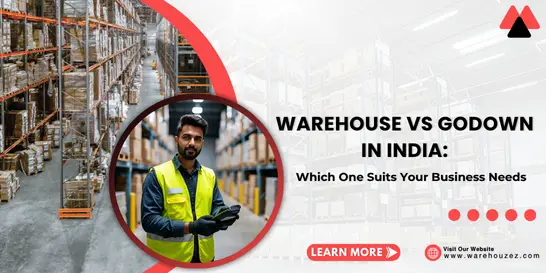Why Inventory Visibility Is the #1 Priority in Modern Supply Chains
Why Inventory Visibility Is the #1 Priority in Modern Supply Chains
“You can't manage what you can't see.”
Imagine running a store, but you’re not sure how much stock is left on your shelves. Orders come in, customers are waiting, but you’re just guessing. That’s indeed the reality many businesses face without proper inventory visibility.
In today’s world of modern supply chains, inventory is not just another asset—it’s the backbone of operations. Whether you're a B2B wholesaler, a D2C brand, or a growing e-commerce business, knowing exactly what you have, where it is, and when you need it, is key to success.
In this blog post, we will explain why inventory visibility has become the top-most priority in modern supply chains. We’ll also explore its benefits and offer tips to improve your stock control for better business results. So, let's get dive in!
Why Inventory Visibility Is More Important Than Ever
In a time when supply chains are becoming more complex, digitalized, and global, stock visibility has turned into a must-have. Today’s businesses face rising customer demands, shorter delivery timelines, and increasing competition.
The shift from traditional retail to online shopping has also changed how inventories are handled. Brands now deal with multi-channel orders, multiple warehouses, and 3PL partners across regions.
Let’s not forget disruptions, be it climate changes, labour shortages, or global politics.Without real-time insights into your inventory, these disruptions can often obstruct operations.
Live stock tracking and status updates empower businesses to:
- Stay prepared during disruptions
- Meet delivery promises
- Avoid overstocking or stockouts
- Maintain strong customer satisfaction
As a result, businesses now see inventory accuracy not as a back-end concern but as a front-line strategy.
Top Benefits of Inventory Visibility in Supply Chain
Gaining real-time access and insight into inventory unlocks various advantages. It allows companies to operate smoothly, reduce costs, and serve customers better.
Let’s explore the key benefits:
1. Better Inventory Accuracy: Visibility into inventory levels ensures your stock records match the actual items in the 3PL warehouse.
With this, you reduce:
- Stock discrepancies
- Errors in order fulfillment
- Manual checks and delays
This is especially helpful in 3PL warehouses, where multiple clients manage inventory under one roof.
2. Reduced Stockouts and Overstocking: No business wants empty shelves or dead stock.
Real-time visibility gives you:
- Accurate stock levels
- Forecasting tools
- Alerts for low stock or slow movers
This helps balance demand and supply efficiently.
3. Faster Order Fulfillment: Customers these days expect next-day or same-day delivery:
With real-time insights into inventories businesses can:
- Locate stock faster
- Choose the best warehouse
- Cut down shipping time
This results in happier customers and repeat business.
4. Improved Supply Chain Planning: With clear data on stock levels, companies can plan better.
They can:
- Adjust to seasonal demands
- Plan marketing around available stock
- Set reorder points smartly
This is a game-changer for D2C brands that often deal with fast product turnover.
5. Enhanced Collaboration with 3PL Partners: When working with a 3PL provider, transparency is certainly crucial. With up-to-date, live stock tracking, both you and your 3PL can:
- View real-time stock data
- Coordinate inbound and outbound logistics
- Avoid miscommunication and delays
It improves trust and operational performance.
6. Cost Control and Higher Profit Margins: Efficient inventory management means:
- Less money tied in unused stock
- Fewer write-offs and returns
- Reduced warehousing costs
That leads to better cash flow and stronger bottom lines.
7. Higher Customer Satisfaction: If your system says an item is available, and it actually is—that builds trust. With better inventory accuracy, businesses can:
- Keep delivery promises
- Offer faster refunds or replacements
- Maintain a great brand experience
Tips to Improve Inventory Visibility: How to Keep Your Stock Levels Just Right
Improving inventory visibility doesn’t always need big budgets. A mix of smart practices and tech adoption can literally work wonders.
Here’s how to get started:
1. Use a Warehouse Management System (WMS): A modern WMS software helps track inventories in real time across locations. It connects with other tools like TMS (Transport Management System) and ERP systems.
Benefits include:
- Live stock tracking
- Automated stock updates
- Barcode scanning and real-time data sync
It’s a must-have for 100% accurate warehouse inventory management.
2. Integrate Systems Across Sales Channels: Selling through your website, Amazon, Flipkart, and retail stores? Make sure your systems are connected.
With integrated platforms:
- Stock updates in one place reflect everywhere
- Fewer errors in availability
- Better control over multi-channel sales
3. Work Closely with Your 3PL Warehouse Partner: A reliable 3PL partner should offer:
- Cloud-based dashboards
- Transparent reporting
- Real-time inventory snapshots
Choose a 3PL that uses technology and shares access to data with you.
4. Set Reorder Points and Alerts: Don’t wait till you run out of stock.
Use tools that let you:
- Set minimum stock levels
- Get alerts before stock runs low
- Automate reordering where possible
This avoids last-minute rushes and stockouts.
5. Conduct Regular Inventory Audits: Even with automation, physical checks matter.
Schedule:
- Cycle counts weekly or monthly
- Full inventory audits quarterly
This helps detect errors and fix them early.
6. Train Your Warehouse Team: A well-trained team ensures:
- Fewer data entry errors
- Faster order picking
- Better use of inventory tools
Invest in training and standard processes.
Concluding Remarks
In today’s dynamic supply chain landscape, inventory visibility is not optional anymore, it’s imperative.
It drives accuracy, business growth, and customer trust.
Whether you’re a D2C brand fulfilling hundreds of daily orders, or a B2B business working with a 3PL warehouse, knowing what’s in stock, where it is, and how fast it moves can give you the edge.
Start by improving your in-house systems, training your teams, and partnering with tech-enabled 3PLs.
Because in the world of logistics, clarity is control, and this control leads to success.



